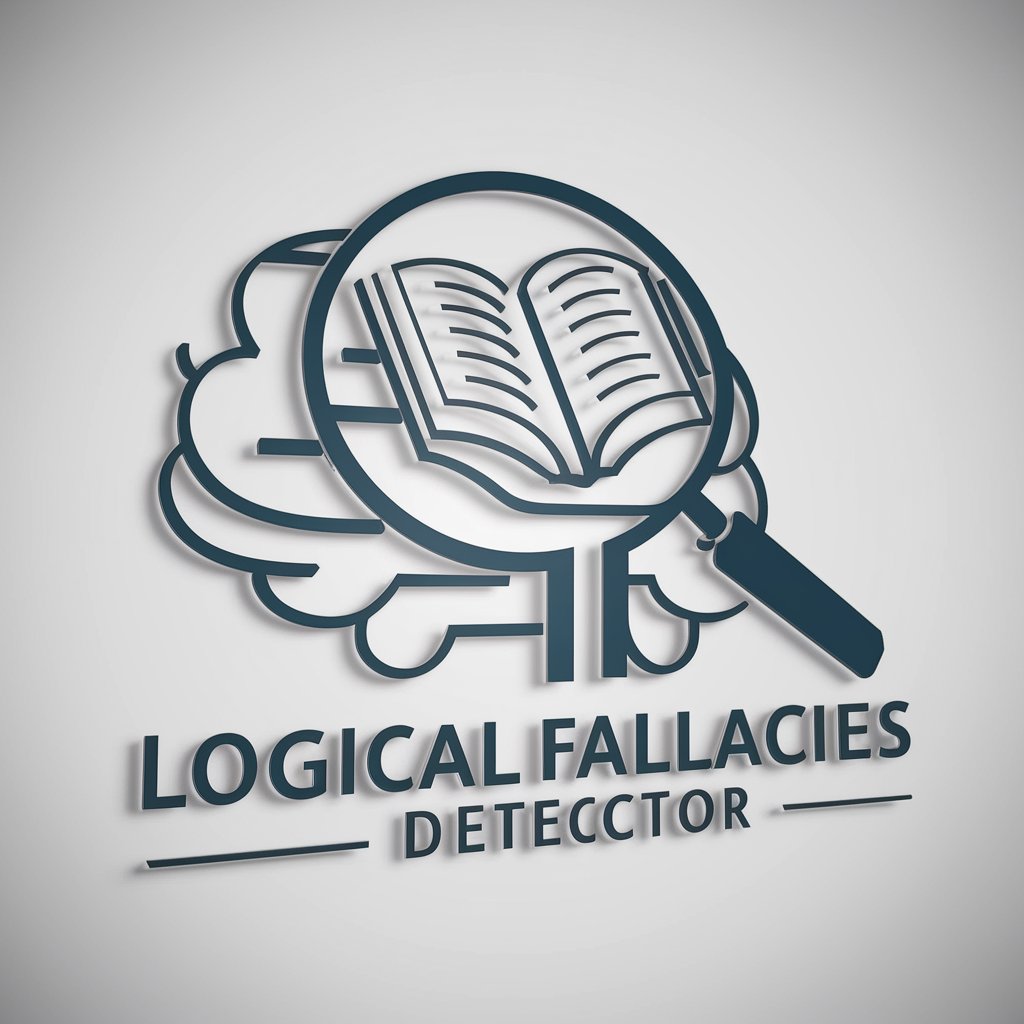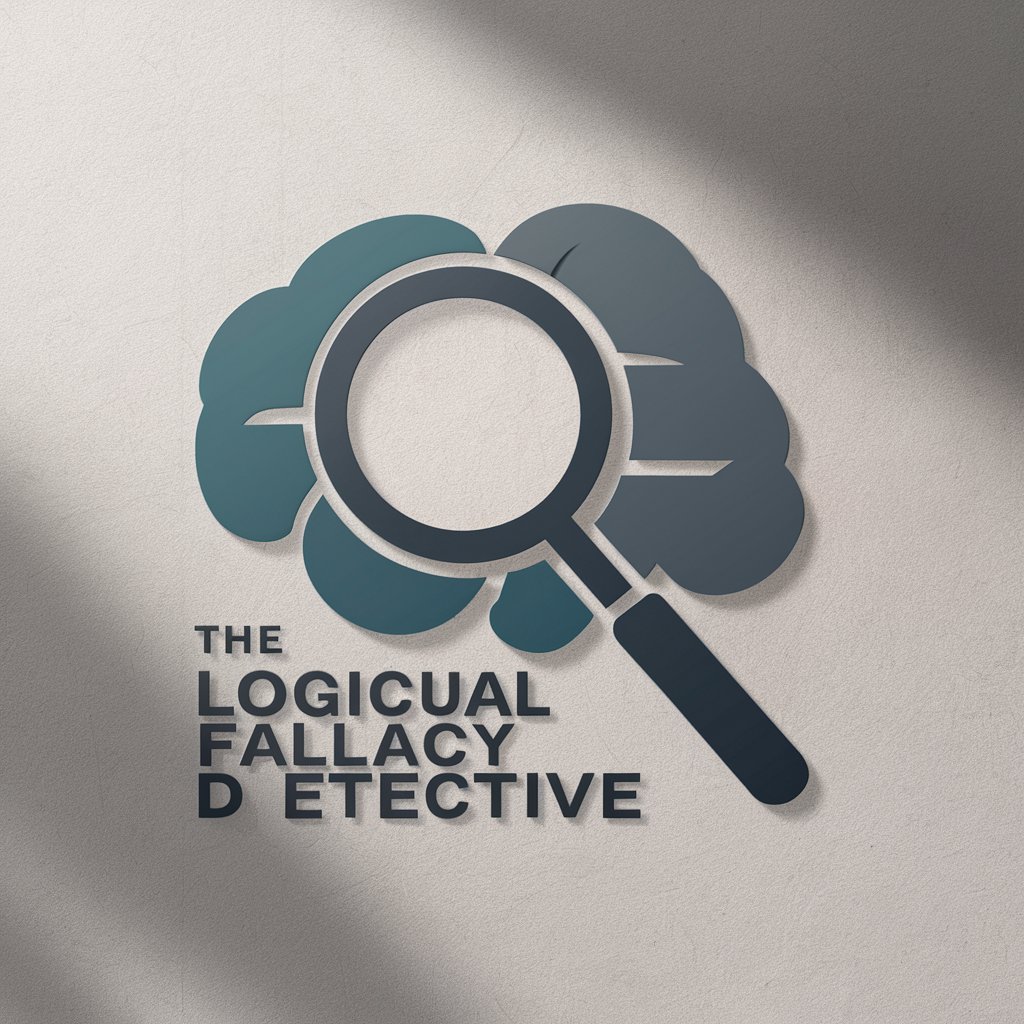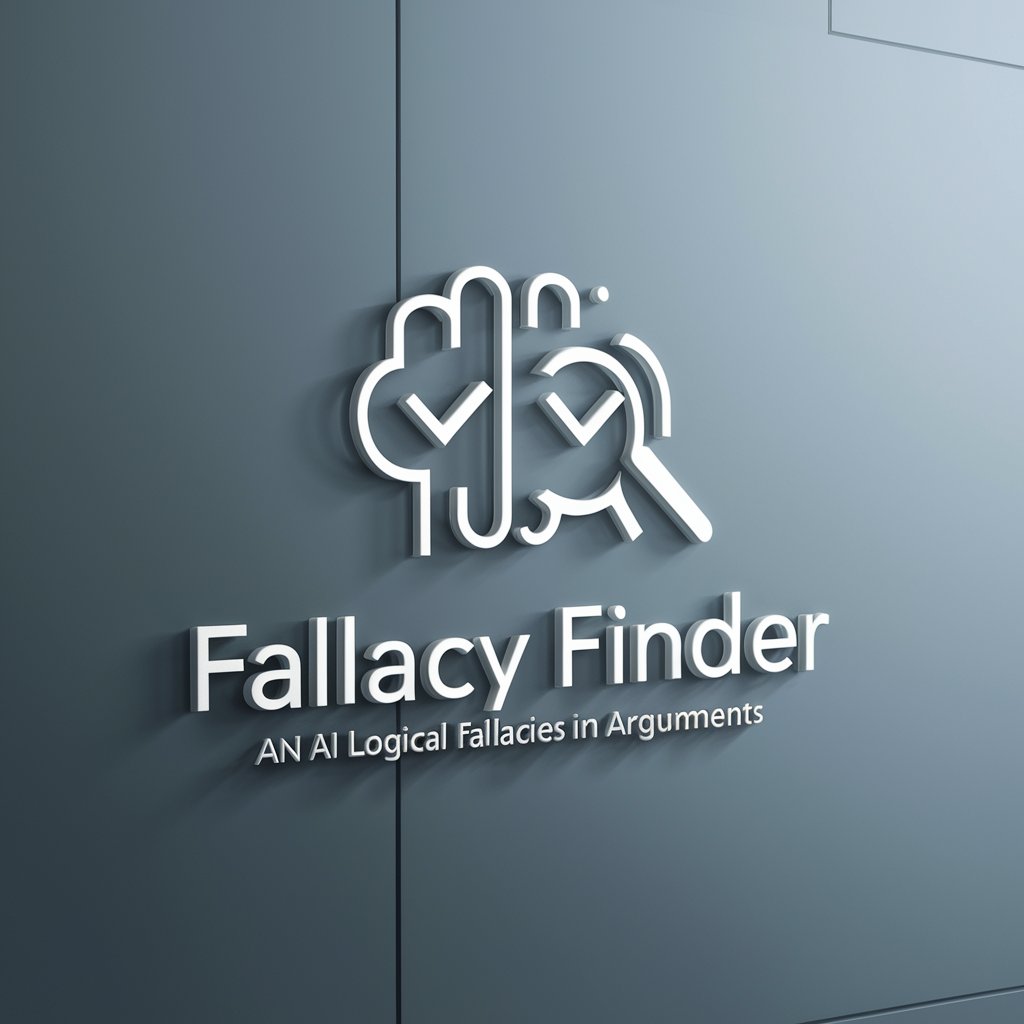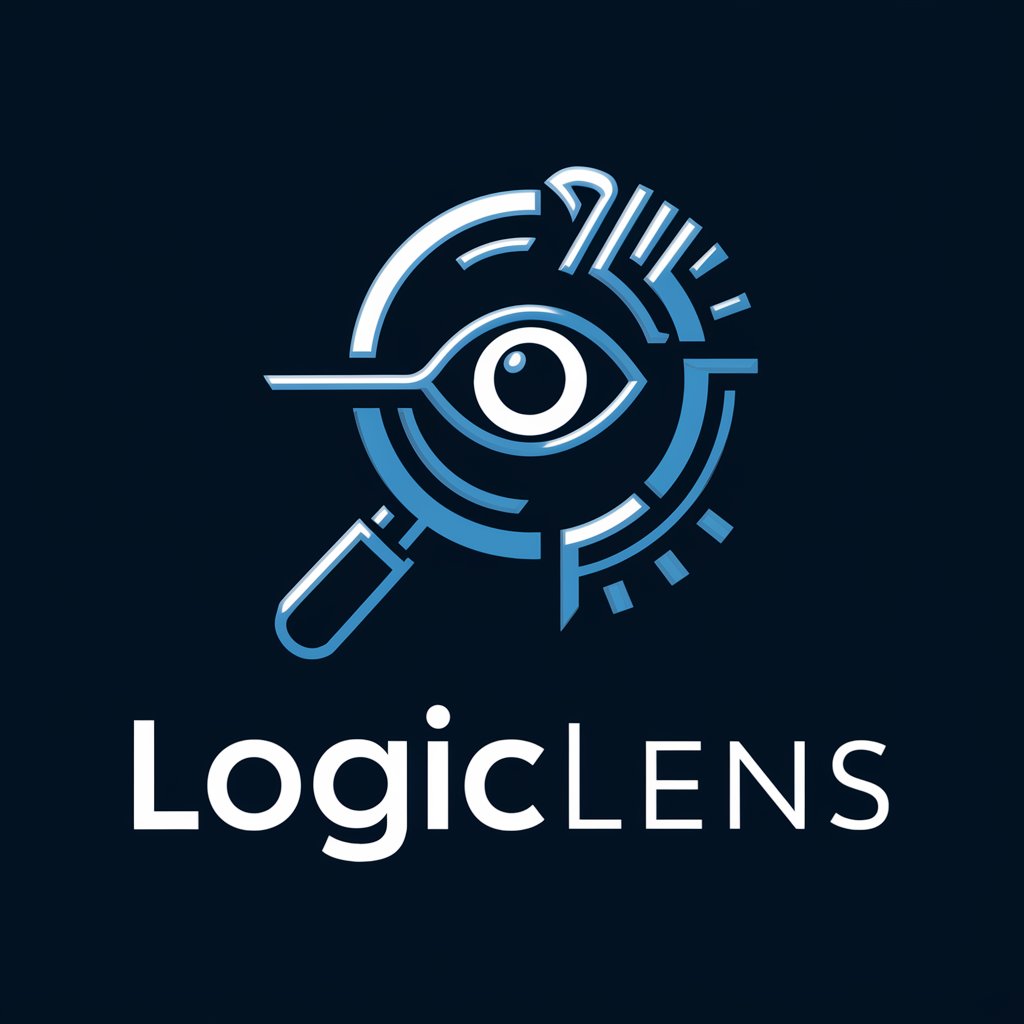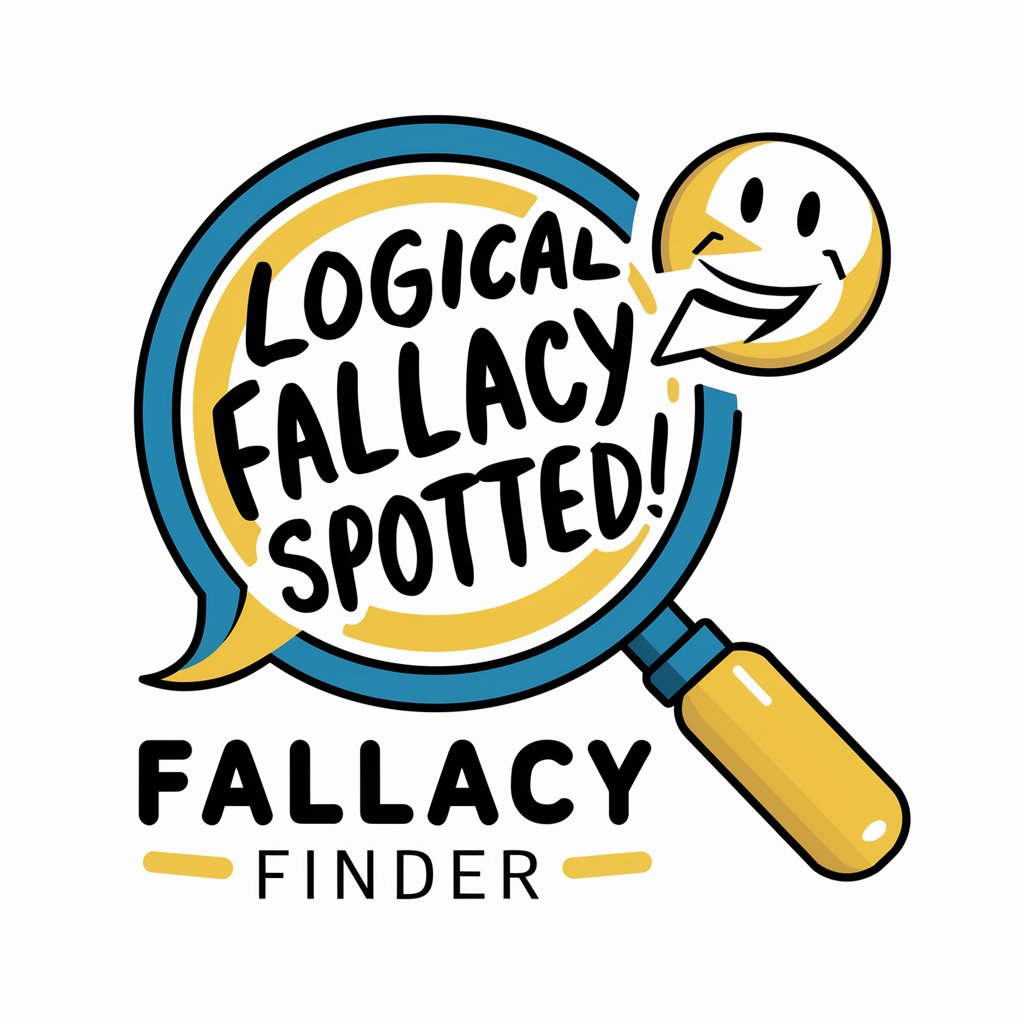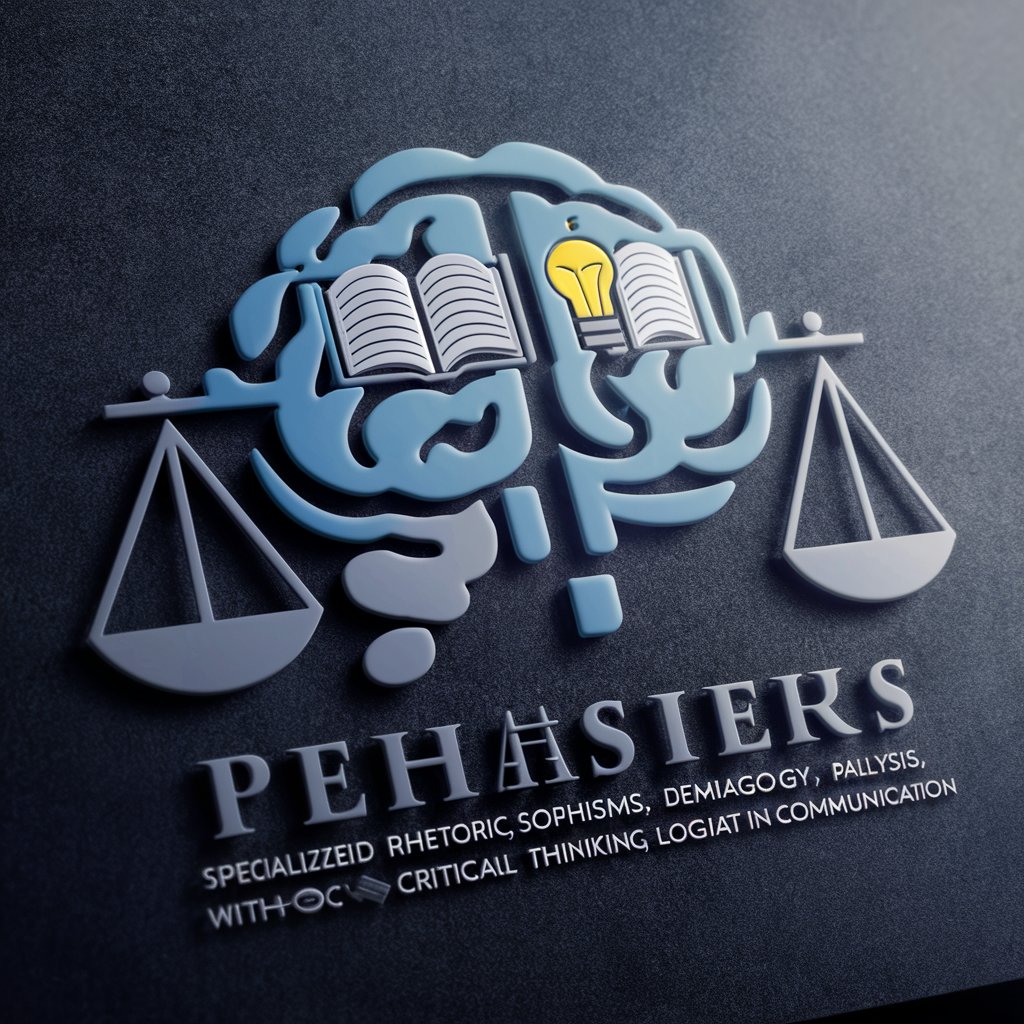
Reasoning fallacies recognition - Fallacy Identification Tool
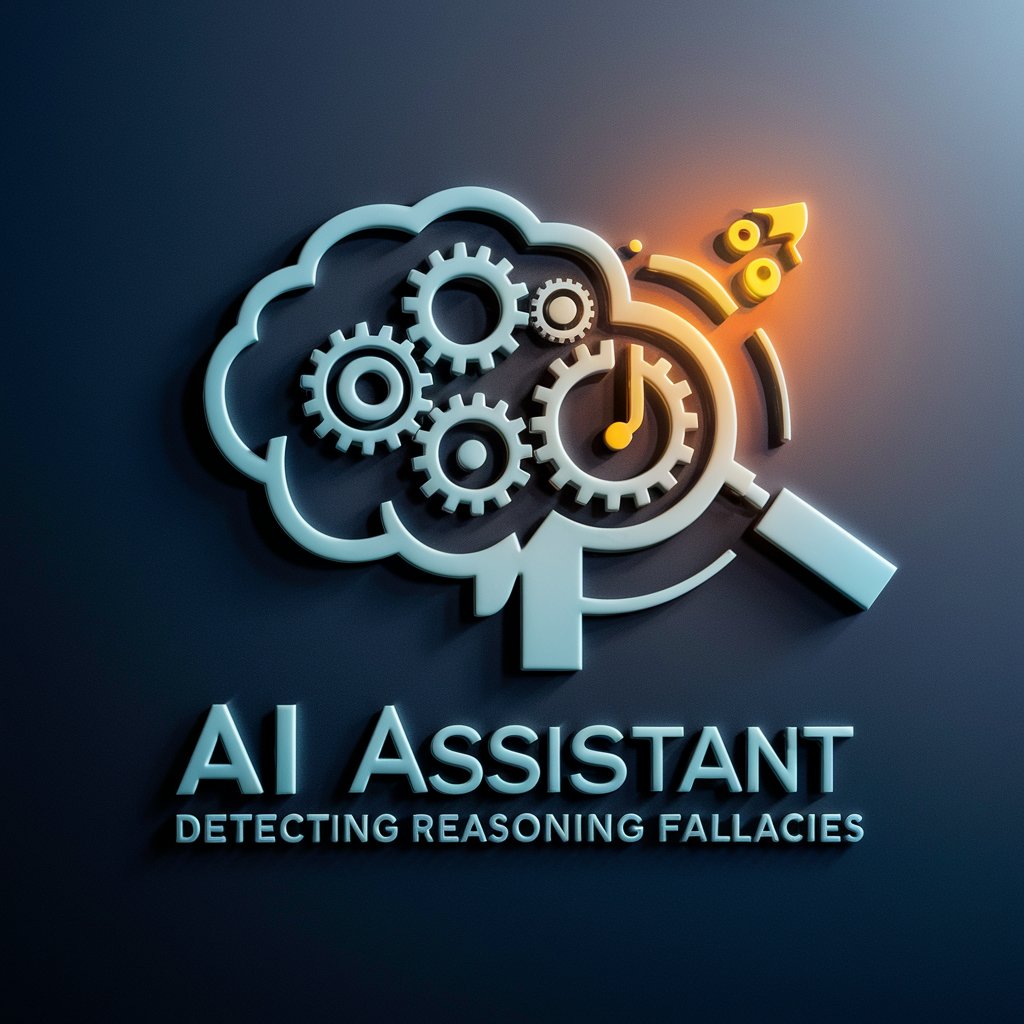
Welcome! Let's find and fix some reasoning fallacies.
Unveil fallacies with AI-powered precision.
Detect reasoning fallacies in the following argument:
Analyze this conversation for logical errors:
Identify any fallacious reasoning in this statement:
Evaluate this article for reasoning fallacies and logical inconsistencies:
Get Embed Code
Introduction to Reasoning Fallacies Recognition
The purpose of reasoning fallacies recognition is to identify errors in reasoning within arguments, discussions, or thought processes. These fallacies can range from formal logical errors, which involve the structure of an argument, to informal fallacies that concern misleading or irrelevant content. An example of a formal fallacy is the 'Non sequitur fallacy', where the conclusion does not logically follow from the premises. An example of an informal fallacy is the 'Straw man fallacy', where an opponent's argument is misrepresented to make it easier to attack. The design purpose behind recognizing reasoning fallacies is to enhance critical thinking, improve argumentation skills, and facilitate clearer communication. By identifying fallacies, individuals can avoid flawed reasoning in their own arguments and critically assess the arguments of others. Powered by ChatGPT-4o。

Main Functions of Reasoning Fallacies Recognition
Educational Enhancement
Example
In educational settings, teaching reasoning fallacies can help students develop critical thinking skills. For instance, during debates, students learn to identify and avoid fallacies in their arguments.
Scenario
A teacher presents various argument examples to students, asking them to identify any logical fallacies. This exercise helps students recognize fallacies like 'Ad hominem' or 'Slippery slope' in real-world and academic contexts.
Improving Public Discourse
Example
In public debates or discussions, recognizing fallacies can lead to more productive and respectful exchanges. For example, identifying a 'False dilemma' fallacy can prevent the oversimplification of complex issues.
Scenario
During a public debate on climate change, a participant points out a 'False dilemma' fallacy when an opponent presents only two extreme options for addressing the issue, ignoring the spectrum of possible solutions.
Legal and Ethical Reasoning
Example
In legal arguments or ethical debates, recognizing fallacies can help in constructing sound arguments and making fair judgments. For instance, avoiding the 'Appeal to emotion' fallacy can lead to more objective decision-making.
Scenario
A lawyer identifies an 'Appeal to emotion' fallacy in an opponent's closing argument, where the opponent tries to sway the jury with an emotionally charged but irrelevant story, and counters it with factual evidence.
Media Literacy
Example
When consuming news or other media, identifying fallacies can help individuals critically evaluate the information presented to them, such as distinguishing biased reporting that uses the 'False cause' fallacy to link unrelated events.
Scenario
A media literacy workshop teaches participants to spot the 'False cause' fallacy in news stories that incorrectly attribute social changes to unrelated legislative actions, helping them to understand the importance of critical analysis of media sources.
Ideal Users of Reasoning Fallacies Recognition Services
Students and Educators
Students can use these services to develop their critical thinking and argumentation skills, while educators can incorporate them into teaching materials to improve logical reasoning and debate skills among students.
Debaters and Public Speakers
Individuals engaged in debates or public speaking can use reasoning fallacies recognition to refine their arguments, making them more coherent and persuasive, while also critically evaluating the arguments of their opponents.
Legal Professionals
Lawyers and judges can benefit from these services by enhancing their ability to construct logical arguments and identify weaknesses in the arguments presented in court, leading to fairer judgments and more effective advocacy.
Journalists and Media Consumers
Journalists can improve their reporting by avoiding reasoning fallacies in their stories, while media consumers can become more discerning readers, viewers, or listeners, capable of identifying biased or flawed arguments.
Policy Makers and Political Analysts
This group can use reasoning fallacies recognition to develop more sound policies and analyze political discourse more effectively, avoiding common pitfalls in policy advocacy and political debate.

Using Reasoning Fallacies Recognition
1
Start by accessing a free trial at yeschat.ai, no sign-up or ChatGPT Plus required.
2
Familiarize yourself with different types of reasoning fallacies through provided resources or examples.
3
Use the tool to analyze texts where reasoning is key: debates, essays, or articles.
4
Apply the insights gained to improve your own arguments, by identifying and avoiding common fallacies.
5
Regularly practice with diverse texts to sharpen your fallacy recognition skills, enhancing critical thinking.
Try other advanced and practical GPTs
Vinnova Guide
Elevate Your Vinnova Applications with AI

Canada Tax Guide
Navigate Taxes with AI-Powered Precision
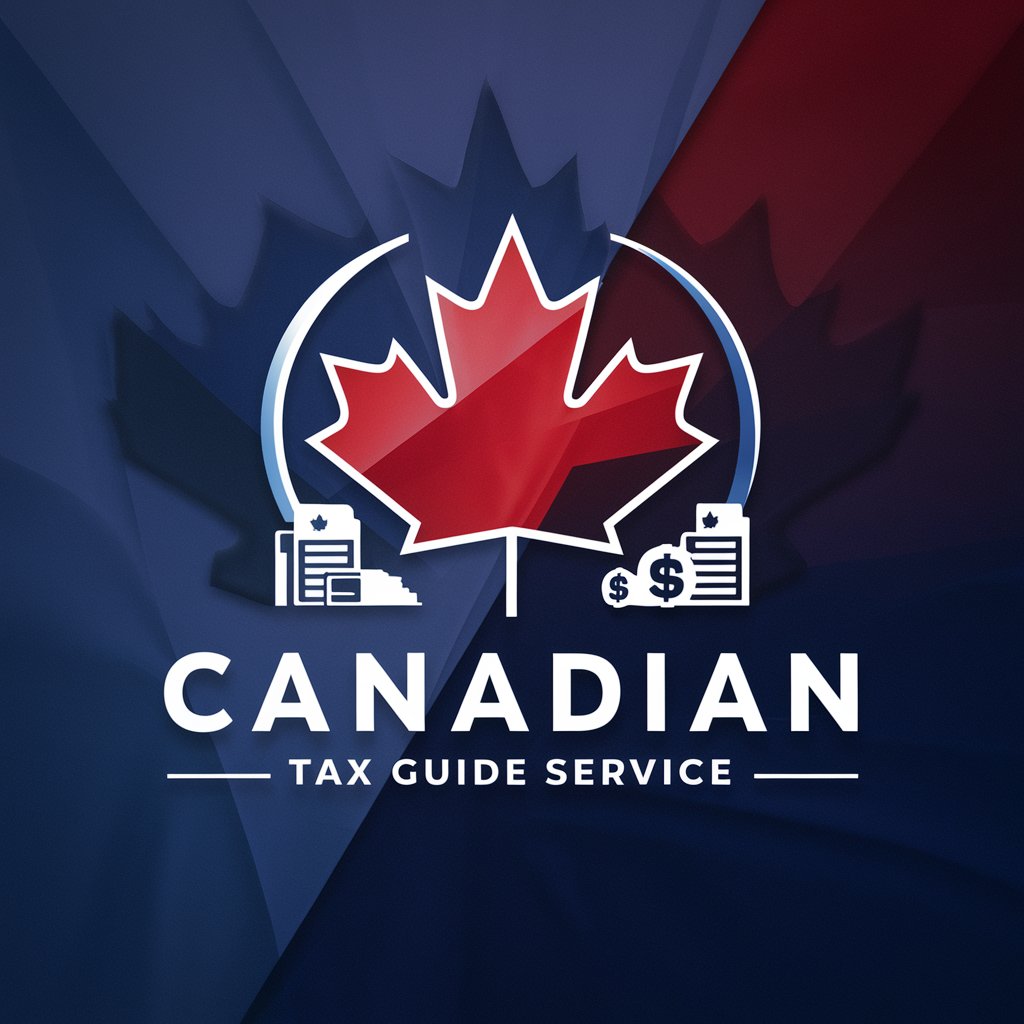
Brand Identity Builder
Craft Your Brand's Future with AI
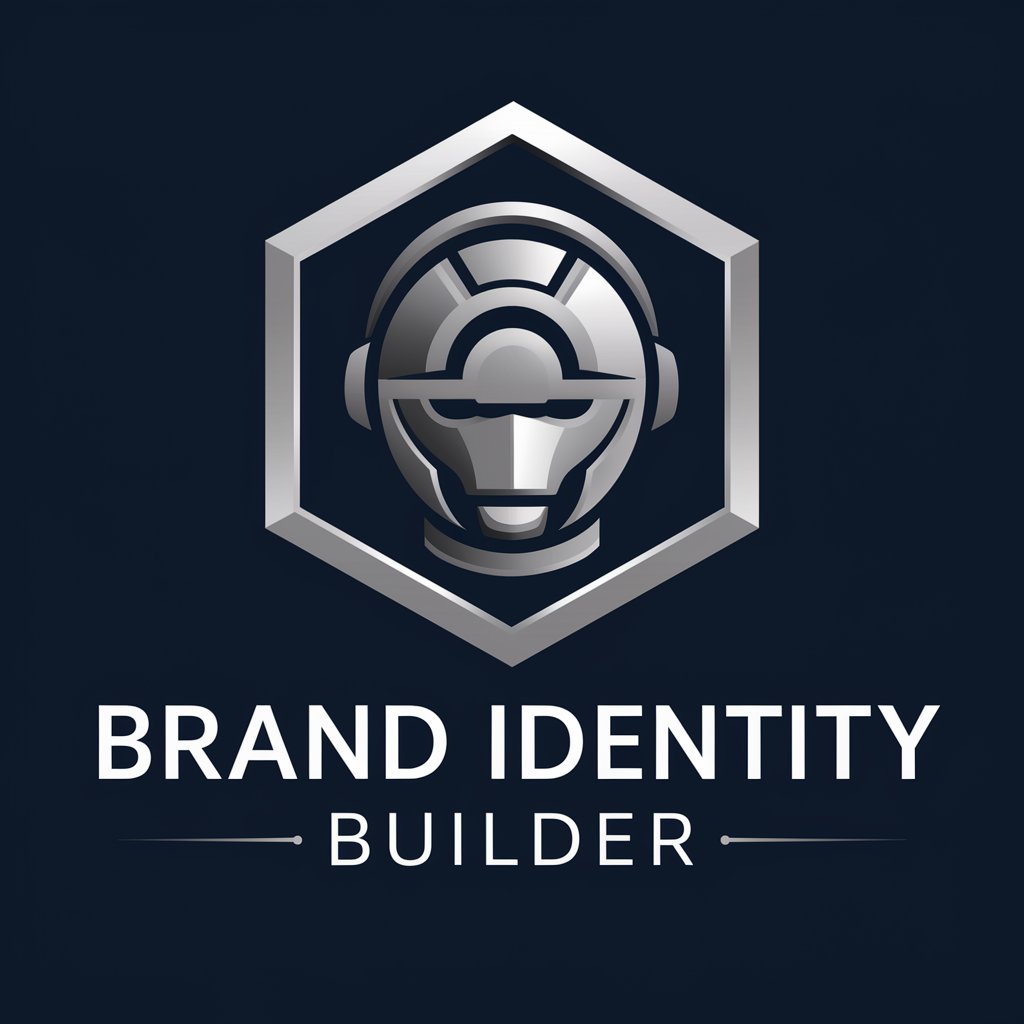
Cognitive biases recognition
Unveil biases with AI-powered analysis
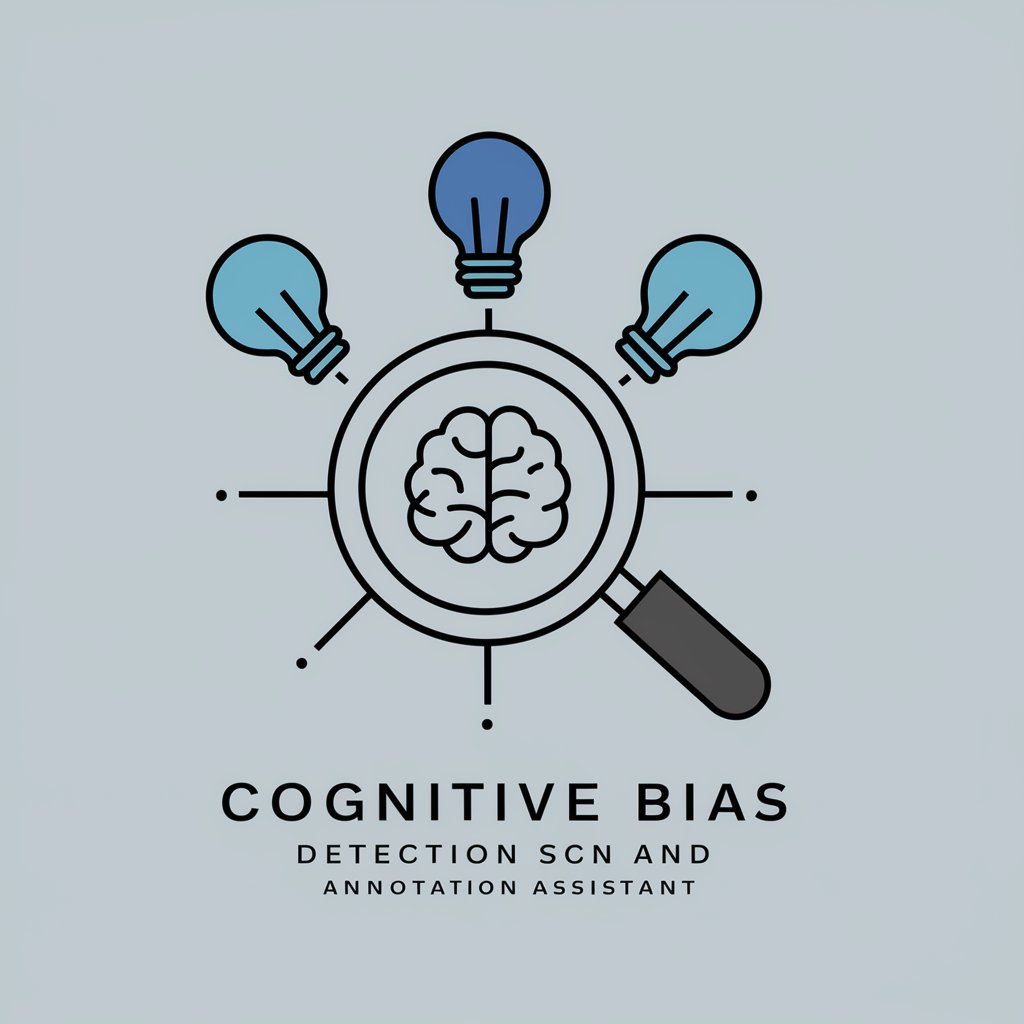
AI事業者ガイドライン案質問チャット
Navigate AI Ethics and Guidelines Effortlessly

Brand Agent
Empowering Your Brand with AI

India Tax GPT
Navigating Indian Taxes with AI
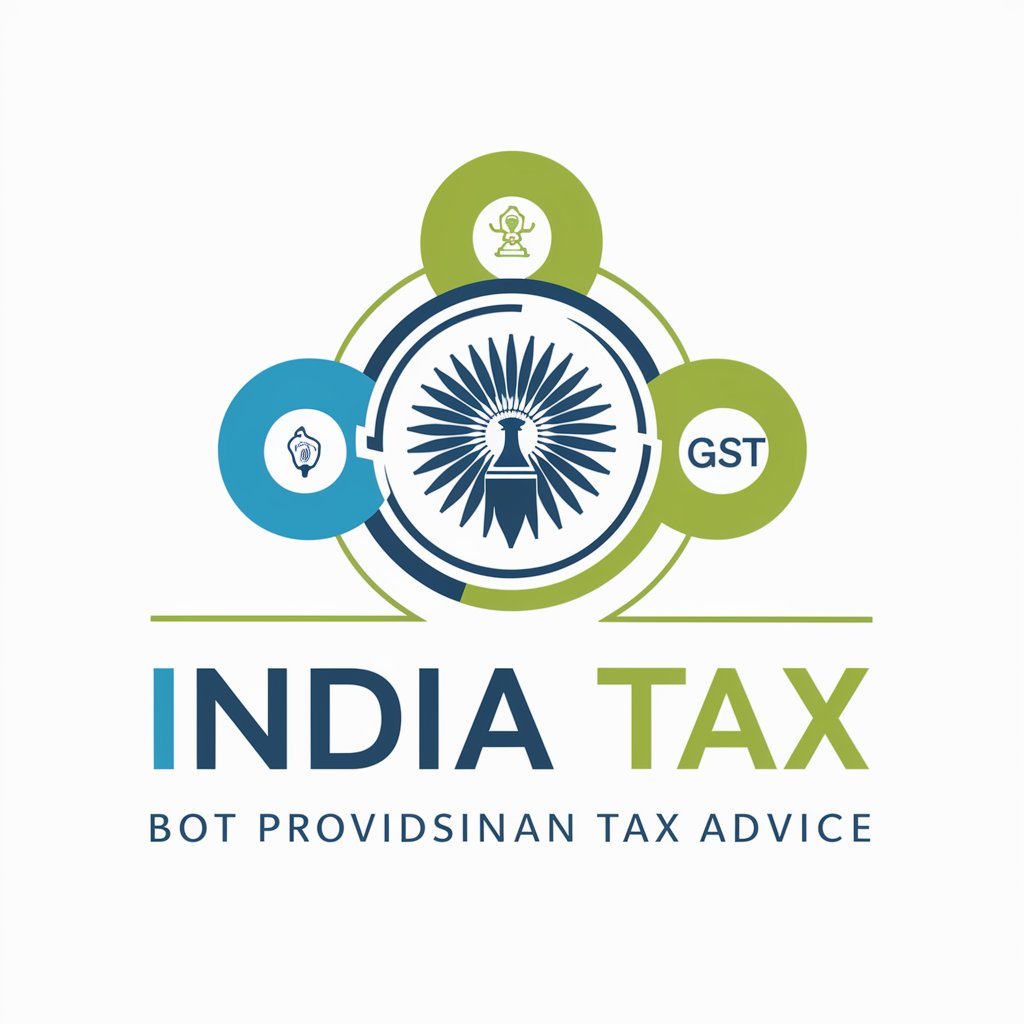
キャリア支援 アシスタント
Empowering Career Decisions with AI
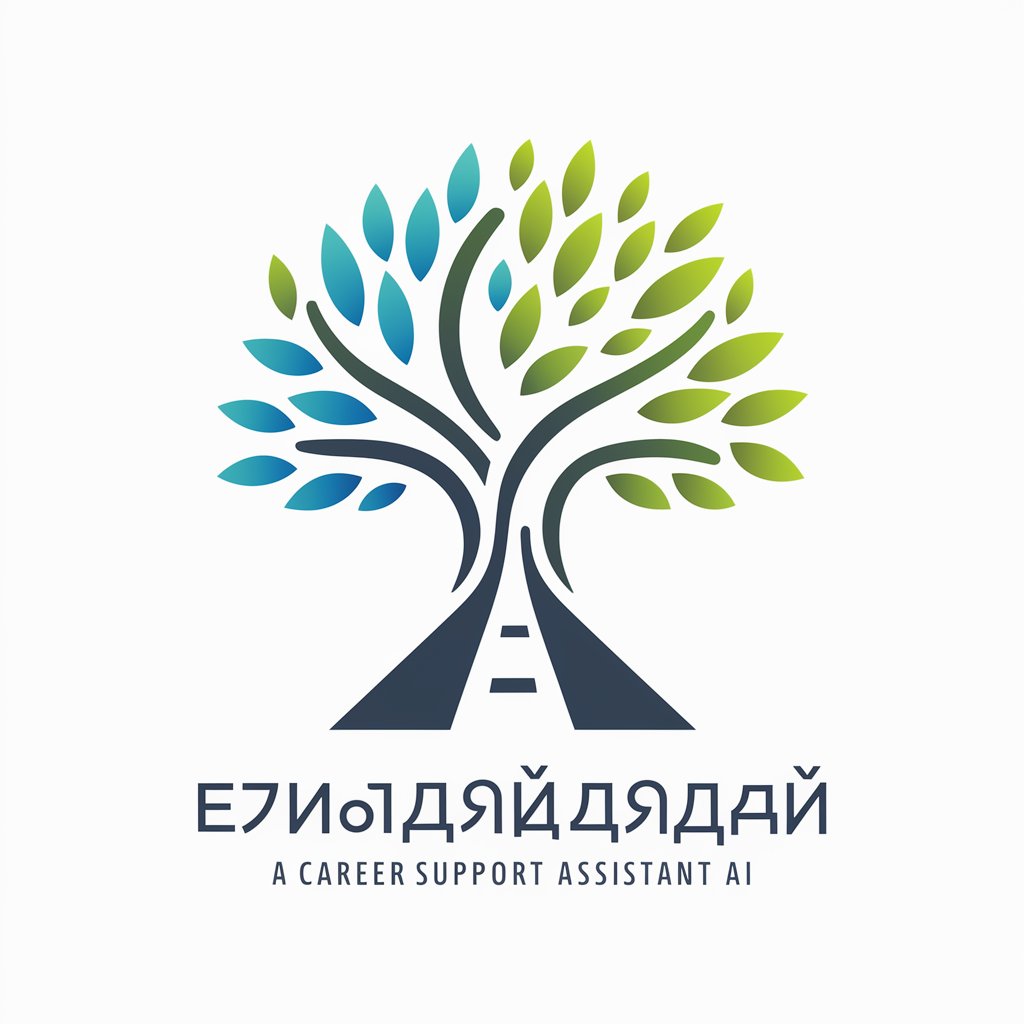
自動ブログ記事作成(WebPilot版)
Crafting Fresh, AI-Powered Blog Content
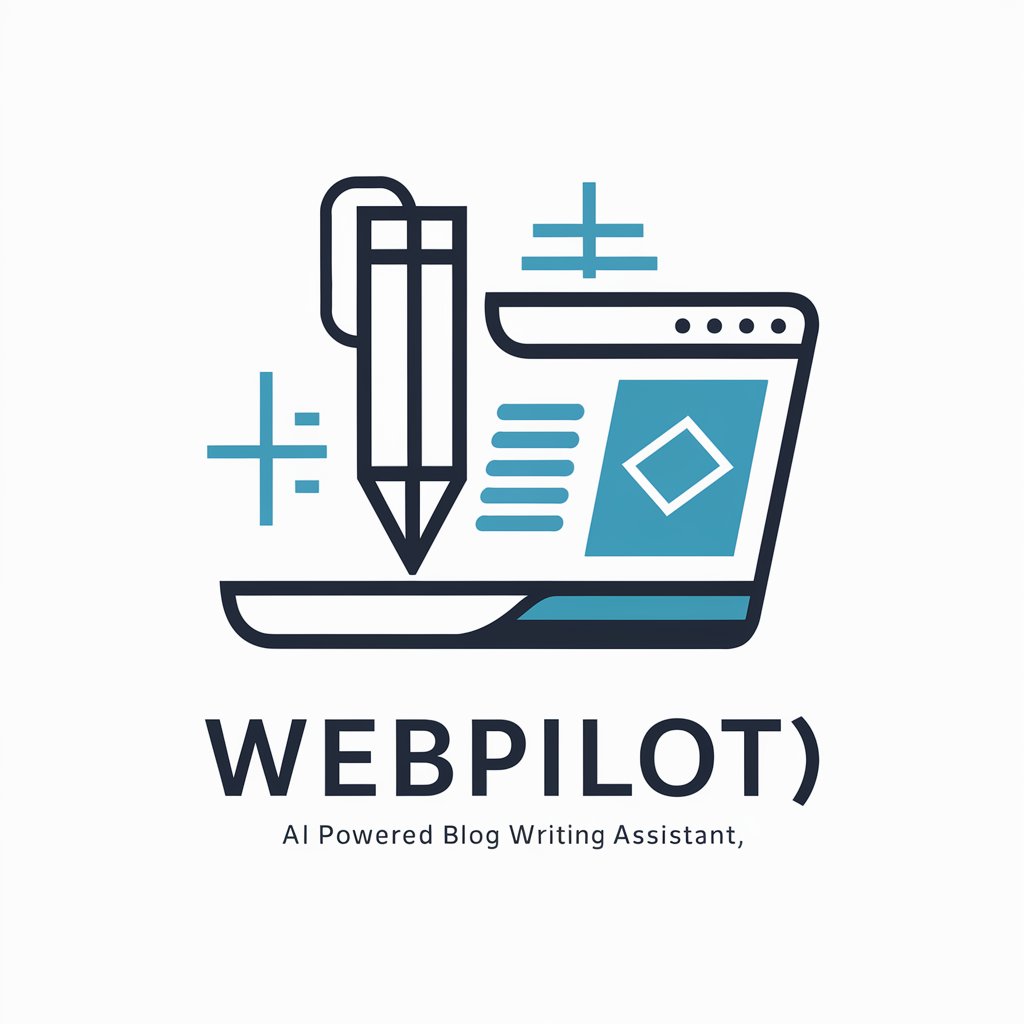
Sinterklaas Rijm GPT
Crafting Personalized Poems with AI

Pragya
Empowering In-depth Insights with AI
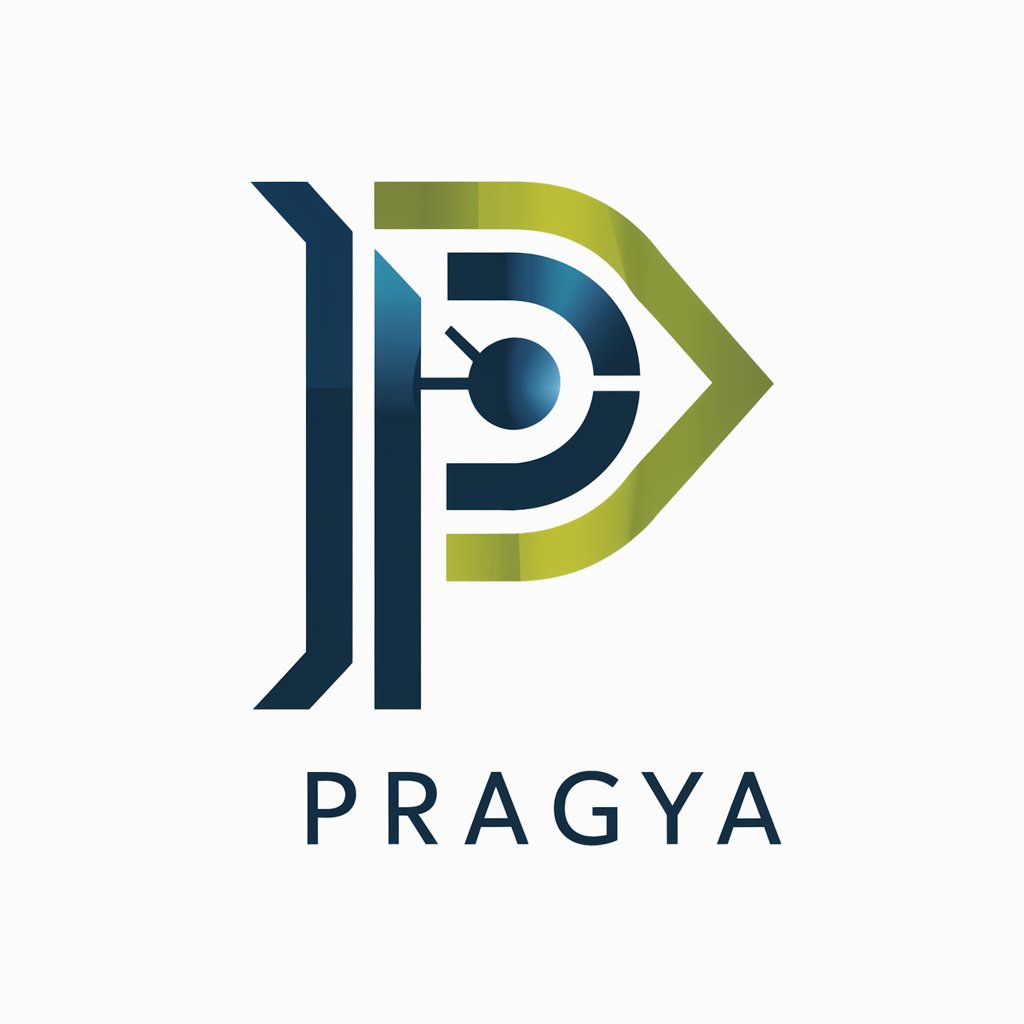
Corporate Analyst
Empowering decisions with AI-driven insights
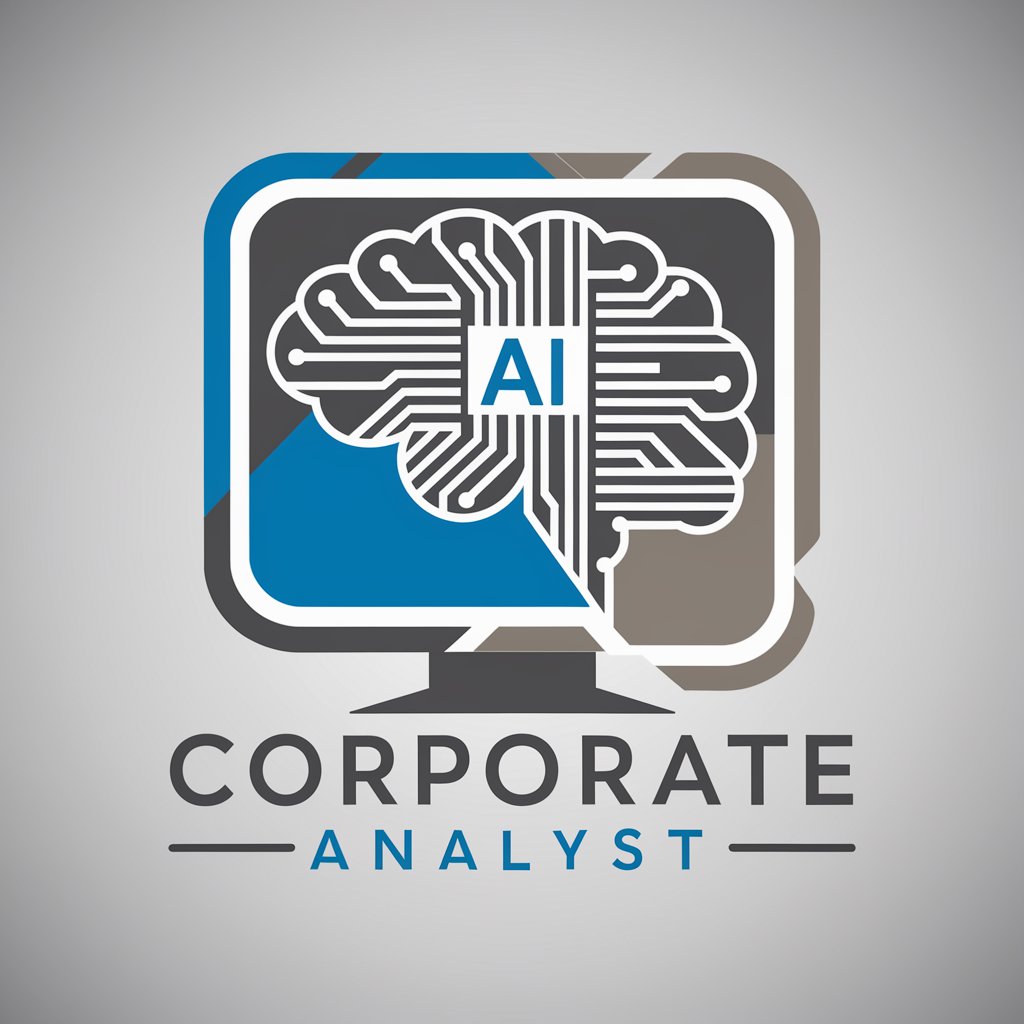
Q&A on Reasoning Fallacies Recognition
What is reasoning fallacies recognition?
It's the process of identifying errors in reasoning within arguments, helping to enhance critical thinking and argumentative skills.
How can this tool improve my writing?
By identifying logical fallacies in your drafts, you can refine your arguments to be more coherent, persuasive, and logically sound.
Can this tool help in academic research?
Absolutely. It aids in critiquing sources and structuring arguments effectively, ensuring academic rigor and integrity.
Is reasoning fallacies recognition useful in everyday life?
Yes, it helps in evaluating advertisements, news, and personal discussions critically, fostering informed decision-making.
How does the AI feature enhance the tool?
The AI-powered feature can analyze vast amounts of text quickly, identify subtle fallacies, and provide explanations, making complex analyses accessible.
